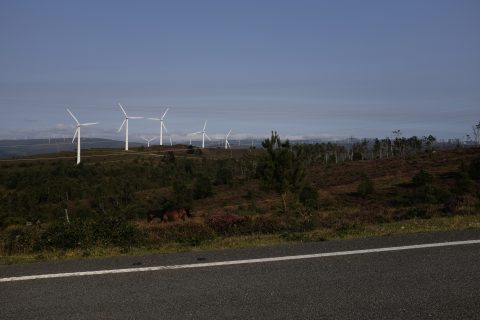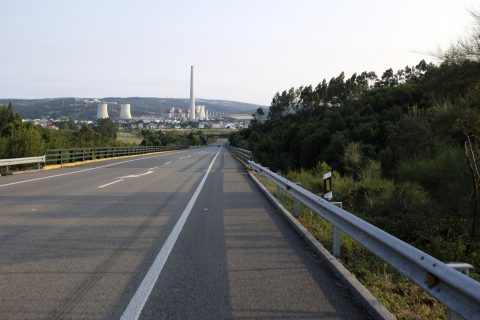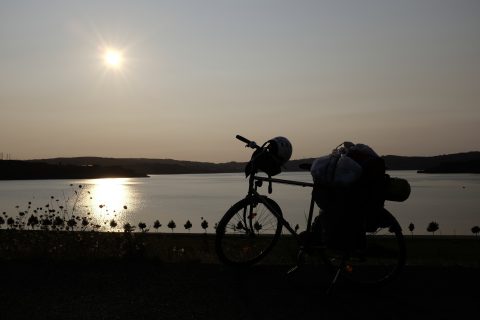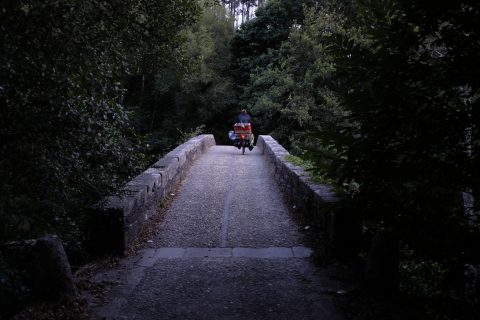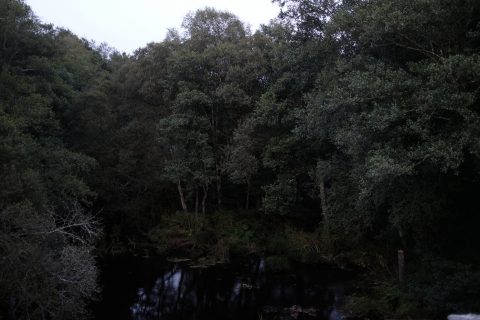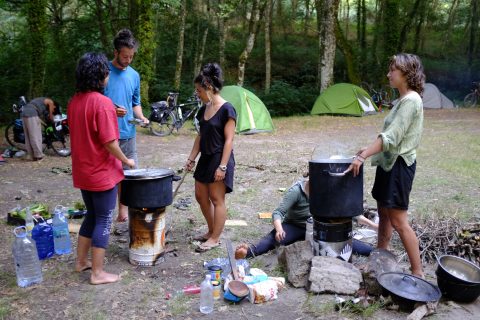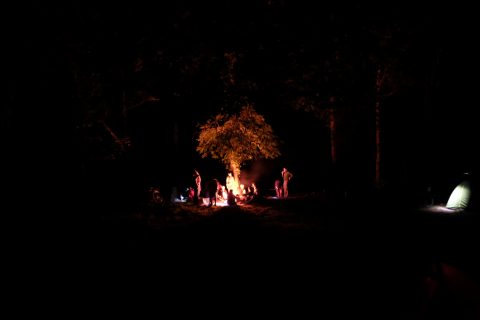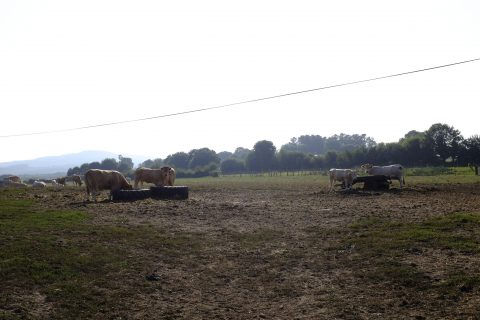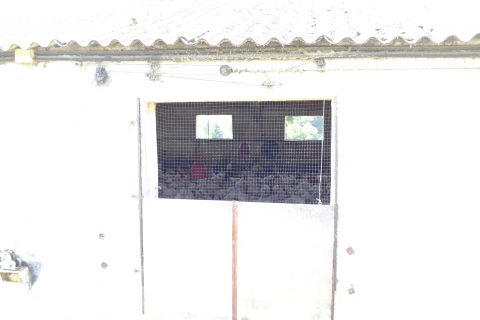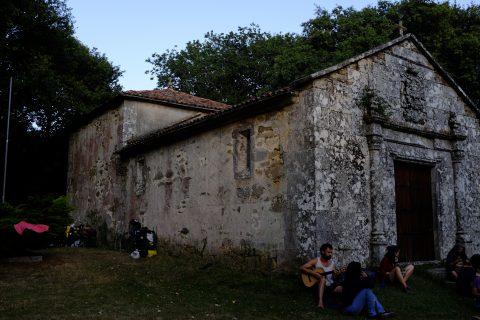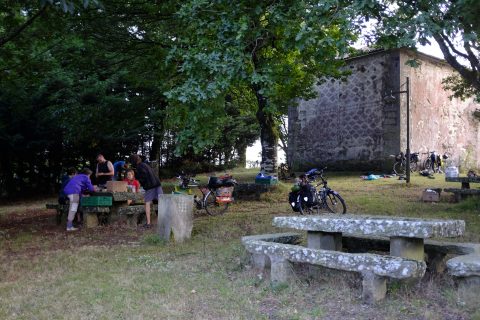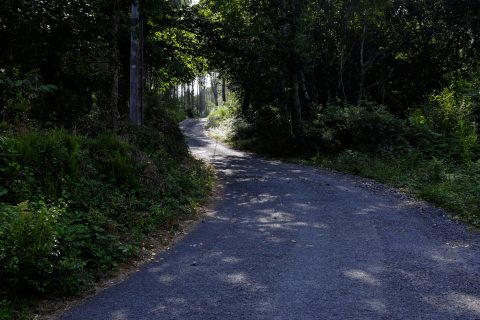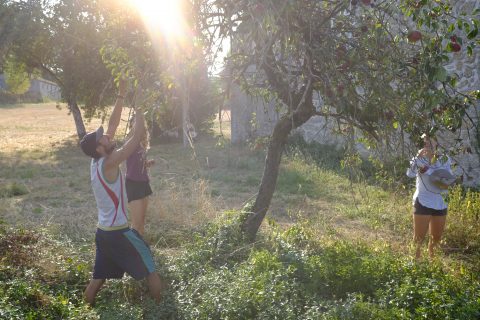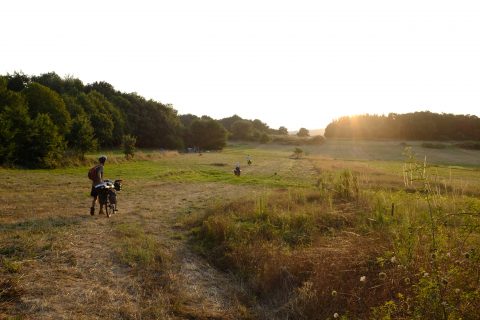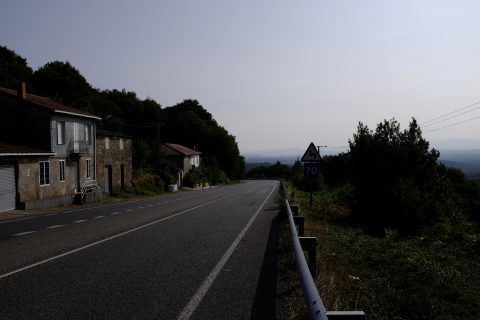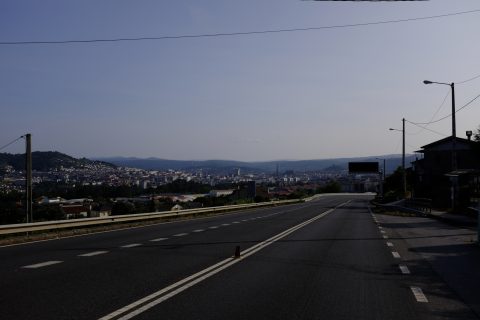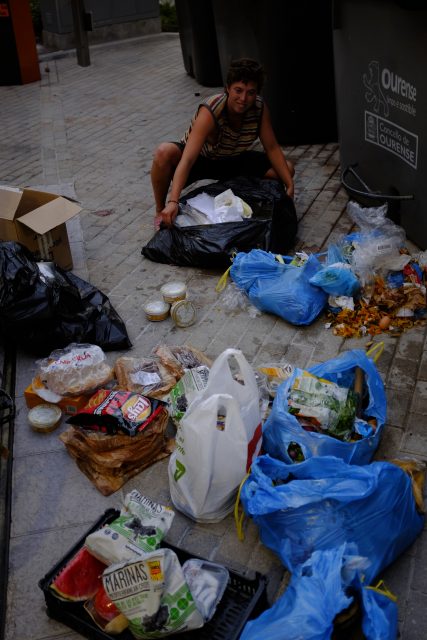In Ortigueira we left the north coast of Spain to enter the hilly and (according to what everyone told us) hot Spanish inland. Most of Spain is not very hilly, sometimes even flat, but on a quite high altitude. The further north and the further east you are, the higher it is, and in some places in the north-east, the landscape can be completely flat but on more than 1000 metres above sea level. So when you leave the north coast, you first have to go up a mountain pass, but when you arrive on the top, suddenly there are no or only small hills.
So the first day of going away from the coast was only 20 km, but started with a constant uphill from sea level all the way up to 700 metres of altitude. Once there, the landscape would be wavy, with the road going up and down between around 500 and 600 metres of altitude.
The first night we arrived on a beautiful lake next to an ugly power plant with the apparently highest chimney in Europe. The first people had already arrived in the early afternoon and had gotten permission from the town hall and the police to camp there. But just when everyone had arrived just one hour before sunset, the police suddenly came back to tell us that they had changed their mind and that we had to leave, but that they would follow us and there wouldn’t be any legal place anywhere in the area to camp legally (a separate blog post about the Spanish police will follow). So we had an emergency circle and decided to move to a different place on the other end of the town, where we arrived when the night was already pitch black. Ironically, a small group of people stayed at the lake, and the police came back to tell them how sorry they are that most of the group had had to leave.
Our next stop was a beautiful shady meadow behind an almost-abandoned church in the middle of a forest. We had a rest day there, but almost didn’t do any group activities, because many people preferred to spend the day in a café in the nearest village, and some people were sick. The place was right on the Camino de Santiago, so lots of pilgrims came by during the day and looked at us. While in previous regions of Spain, people were usually looking away out of politeness, it seems that here in Galicia, people like to stare a lot, so a lot of people stood in the middle of our camp for several minutes to stare at everything in detail. Apart from that the place was really perfect, we even had our own spring with nice drinking water. The only disturbing thing was a motorway close by whose noise made a strange contradiction to the big old trees covering our camp. FCK CRS!
We had three more days to make until our next stop in Ourense, and took a route through the middle of nowhere on tiny roads with almost nothing on the way. The landscape basically consisted of fenced cow fields and poultry farms, and the area was so remote that the goose farmers didn’t even bother hiding their activities, so from the road you could directly see through the windows into the huge barns packed to the top with geese who spent their short lives there in the dark. On the way, annoying flies tried desperately to fly into our ears and eyes to end their lives there and finally forget their childhoods growing up in a pile of cow shit.
One night we slept next to a church in a small village, where we even had access to a proper toilet, and the next morning lots of people arrived to see the unusual situation of so many people in that small village. The other night we slept on a field close to a town (with 10000 inhabitants and probably even more cars, but not a single bike shop, WTF Spain, FCK CRS!). Close by was already the river that goes to Ourense, but typical in the west of the Iberian Peninsula is that the river valleys are much lower than the rest of the landscape, so the river went in a steep canyon more than 300 metres lower than us. Some people took the adventurous and hilly canyon route but got stuck due to a broken bike, the others had to cycle up a big hill but then enjoyed a constant 400 metre downhill into Ourense.






